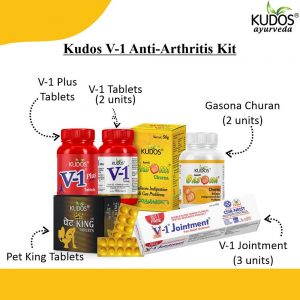Understanding The Ayurvedic Approach To Joint Pain Management
The customary medical practice known as Ayurveda was created in India thousands of years ago. It is based on the concept of holistic health, which includes physical, mental, and spiritual well-being. Ayurveda approaches joint pain management by identifying the root cause of the problem and addressing it through a combination of lifestyle changes, herbal remedies, and therapeutic treatments. It emphasizes the importance of maintaining a balance between the three doshas, or energies, in the body: Vata, Pitta, and Kapha.
According to Ayurveda, joint pain is often related to imbalances in the Vata dosha. Vata is responsible for movement in the body, including the movement of joints, and when it is out of balance, it can cause dryness, stiffness, and pain. Pitta and Kapha doshas can also contribute to joint pain, but in different ways. Pitta is associated with inflammation and excess heat, while Kapha is associated with swelling and heaviness.
To address pain, Ayurvedic practitioners may recommend dietary changes, such as avoiding cold, dry, or processed foods that can aggravate Vata dosha, and consuming warm, nourishing foods that can help balance it. Herbal remedies, such as ginger and turmeric, may also be recommended for their anti-inflammatory properties. Therapeutic treatments, such as oil massages and heat therapy, can help reduce stiffness and pain in the joints.
Causes Of Joint Pain According To Ayurveda
Imbalances in doshas
As previously mentioned, Ayurveda attributes joint pain to imbalances in the three doshas – Vata, Pitta, and Kapha. Pain can occur when these doshas are either too high or too low, causing different types of discomfort. For instance, an excess of Vata can lead to dryness, stiffness, and cracking of the joints, while an excess of Pitta can cause inflammation and warmth in the joints.
Buildup of toxins (ama) in the joints
According to joint pain medicine, the buildup of toxins (ama) in the joints can also lead to joint pain. Ama is the result of incomplete digestion and the accumulation of waste products in the body. When ama accumulates in the joints, it can cause inflammation, swelling, and pain. Ama can be caused by factors such as improper diet, stress, and a sedentary lifestyle. To address joint pain caused by ama, Ayurvedic practitioners may recommend detoxification treatments, such as Panchakarma, to help remove toxins from the body.
Weak digestion leading to improper nutrient absorption write on all
Weak digestion leading to improper nutrient absorption can also contribute to joint pain. According to joint pain medicine, weak digestion can lead to the accumulation of toxins in the body, including the joints. This can cause inflammation and pain. Additionally, a lack of proper nutrition can lead to weak joints and increased susceptibility to joint pain. Ayurvedic practitioners may recommend dietary changes, such as eating warm, cooked foods that are easy to digest, to improve digestion and nutrient absorption. They may also recommend specific herbs and supplements to support digestive health and strengthen the joints.
Ayurvedic Treatments For Joint Pain
Herbal remedies are a central part of Ayurvedic treatment for joint pain. Herbs that are frequently used to treat joint pain include:
- Turmeric: Turmeric contains an active compound called curcumin, which has anti-inflammatory properties. It can help reduce joint pain and stiffness by decreasing inflammation in the body.
- Ginger: Ginger also has anti-inflammatory properties and can help reduce pain and stiffness. It can be taken in the form of ginger tea or added to food as a spice.
- Boswellia: Boswellia is an herb that has been traditionally used in Ayurveda joint pain medicine to treat pain. It contains compounds that have anti-inflammatory effects and can help reduce pain and swelling in the joints.
Panchakarma is a detoxification therapy that can help remove toxins from the body and reduce inflammation. It consists of several treatments, including:
- Abhyanga: Abhyanga is a full-body massage using warm herbal oil. It can help reduce pain and stiffness by improving circulation and relaxing the muscles.
- Swedana: Swedana is a sweating therapy that involves sitting in a steam box or taking a steam bath. It can help reduce pain and stiffness by increasing circulation and promoting relaxation.
- Basti: Basti is an herbal enema that can help remove toxins from the body and reduce inflammation. It can be customized to target specific areas of the body, such as the joints.
Dietary changes can also help manage joint pain. Ayurvedic dietary recommendations for joint pain include:
- Avoiding foods that increase inflammation, such as processed foods, refined sugar, and fried foods.
- Eating foods that reduce inflammation, such as fresh fruits and vegetables, whole grains, and lean proteins.
Lifestyle changes can also help manage joint pain. Ayurvedic recommendations for lifestyle changes include:
- Getting enough rest to promote healing and reduce stress.
- Utilising yoga, meditation, or other stress-reduction techniques.
- Incorporating gentle exercise into daily routine, such as walking, yoga, or swimming. Exercise can help improve circulation, reduce inflammation, and strengthen the muscles and joints.
Specific Ayurvedic Recommendations for Different Types of Joint Pain
In Ayurveda, joint pain is often categorized according to the three doshas: vata, pitta, and kapha. Each type of pain is treated differently, based on the specific dosha that is involved.
Vata-related joint pain is characterized by dryness, coldness, and stiffness. Ayurvedic recommendations for vata-related pain include:
- Eating warm, nourishing foods, such as soups, stews, and warm cereals. These foods can help balance vata and provide nourishment to the joints.
- Regular massage with warm oils, such as sesame oil or almond oil. This can help improve circulation, reduce stiffness, and nourish the joints.
- Gentle exercise, such as yoga or tai chi, can help reduce vata and improve joint mobility.
Pitta-related joint pain is characterized by inflammation, heat, and irritation. Ayurvedic recommendations for pitta-related pain include:
- Eating cooling, soothing foods, such as fresh fruits, vegetables, and whole grains. These foods can help reduce inflammation and balance pitta.
- Avoiding spicy or acidic foods, which can aggravate pitta and increase inflammation.
- Staying cool and avoiding overexertion, which can also increase pitta and aggravate joint pain.
Kapha-related joint pain is characterized by stiffness, heaviness, and swelling. Ayurvedic recommendations for kapha-related pain include:
- Eating warm, light foods, such as soups, stews, and steamed vegetables. These foods can help balance kapha and reduce stiffness and swelling.
- Regular exercise and movement, such as walking or yoga. This can help reduce kapha and improve joint mobility.
- Dry heat therapy, such as a warm compress or heating pad, can also help reduce kapha and improve circulation to the joints.
Overall, Ayurvedic joint pain medicine can be a valuable complement to conventional medicine for those who suffer from pain. By incorporating Ayurvedic joint pain medicine and practices into one’s daily life, it is possible to reduce pain and discomfort, improve joint health, and promote overall well-being.By using herbal remedies, panchakarma therapies, dietary changes, and lifestyle modifications, Ayurveda aims to balance the doshas, remove toxins, and promote overall health and wellness.
Recommended Joint Pain Medicine
Several over-the-counter and prescription medications may be recommended for joint pain treatment products that aid in reducing pain and inflammation, enhancing joint mobility and flexibility, and supporting overall joint health. Joint pain medicine are a safe and sensible option for long-term use because they have a strong safety profile and few negative effects.








